Welcome to our guide on choosing the best air compressor for your needs. Whether you’re a DIY enthusiast or a construction professional, a reliable air compressor is essential for completing tasks efficiently and effectively. With so many options available, it can be challenging to determine which type and model of air compressor are best suited to your specific requirements.
That’s why we’ve put together this comprehensive guide to help you navigate the world of air compressors. We’ll cover everything from the different types of air compressors available to key factors to consider when selecting the best model for your needs. We’ll also provide tips on maintenance and troubleshooting common issues that may arise with your air compressor. By the end of this guide, you’ll be equipped with the knowledge needed to make an informed purchase and ensure optimal performance from your air compressor.
Understanding Different Types of Air Compressors
If you are looking to choose the perfect air compressor, it is important to understand the different types available in the market. Here are the most common types of air compressors:
| Type | Description | Best for |
|---|---|---|
| Piston Compressors | Also known as reciprocating compressors, these types use pistons and cylinders to compress air. They are commonly used for small-scale applications. | DIY projects, home use, small workshops |
| Rotary Screw Compressors | These compressors use two helical screws to compress air. They are known for their efficiency and are often used in industrial applications. | Professional use, heavy-duty applications, industrial settings |
| Portable Compressors | These compressors are designed for mobility and convenience. They are often smaller and easier to transport than other types. | On-the-go projects, outdoor use, small workshops |
When choosing an air compressor, consider the specific applications it will be used for and select a type that best suits your needs. For example, a rotary screw compressor may be the best choice if you require a compressor for heavy-duty industrial work. A portable compressor may be more suitable for smaller DIY projects and mobility.
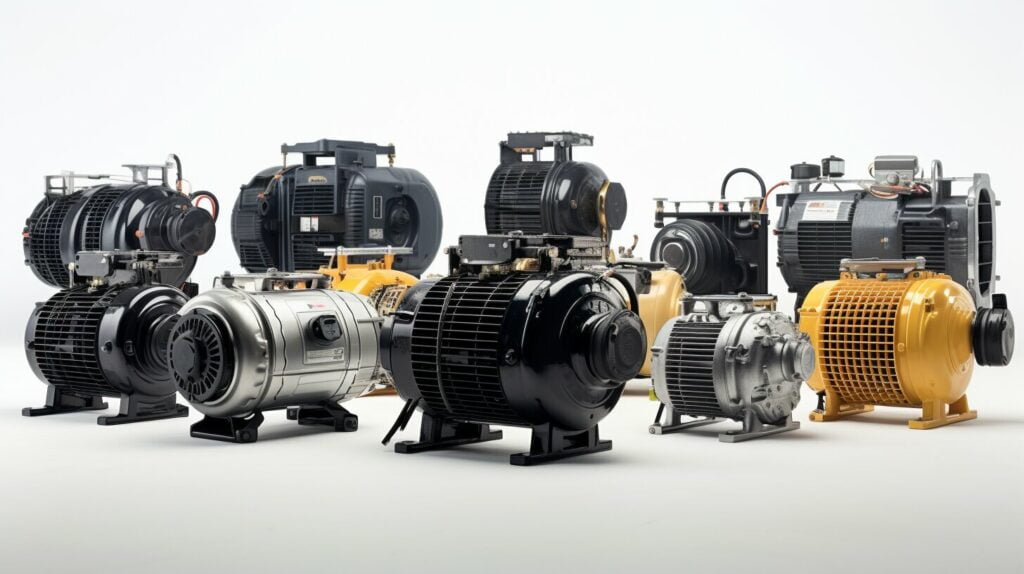
Understanding the different types of air compressors available will help you decide when to choose the best air compressor for your needs.
Determining Your Air Compressor Requirements
Choosing the right air compressor depends on various factors that affect its performance and efficiency. You can select an air compressor that suits your needs and budget by assessing your specific requirements. Here are some key considerations to keep in mind:
| Factor | Description |
|---|---|
| CFM | The tank size determines how much-compressed air the compressor can store and deliver. A larger tank size means longer operational time and less stress on the compressor’s motor. |
| Horsepower | The horsepower (HP) rating determines the motor’s power and its ability to generate airflow. Select an air compressor with the appropriate horsepower for your applications. |
| Tank size | The horsepower (HP) rating determines the motor’s power and ability to generate airflow. Select an air compressor with the appropriate horsepower for your applications. |
| Duty cycle | The duty cycle refers to the compressor’s operational time and rest time. A higher duty cycle percentage means the compressor can run longer without overheating. |
By calculating your specific requirements based on these factors, you can reduce the risk of selecting the wrong air compressor for your needs. Additionally, remember that overestimating your requirements may result in unnecessary expenses, while underestimating them may lead to inefficiency and frequent downtime.
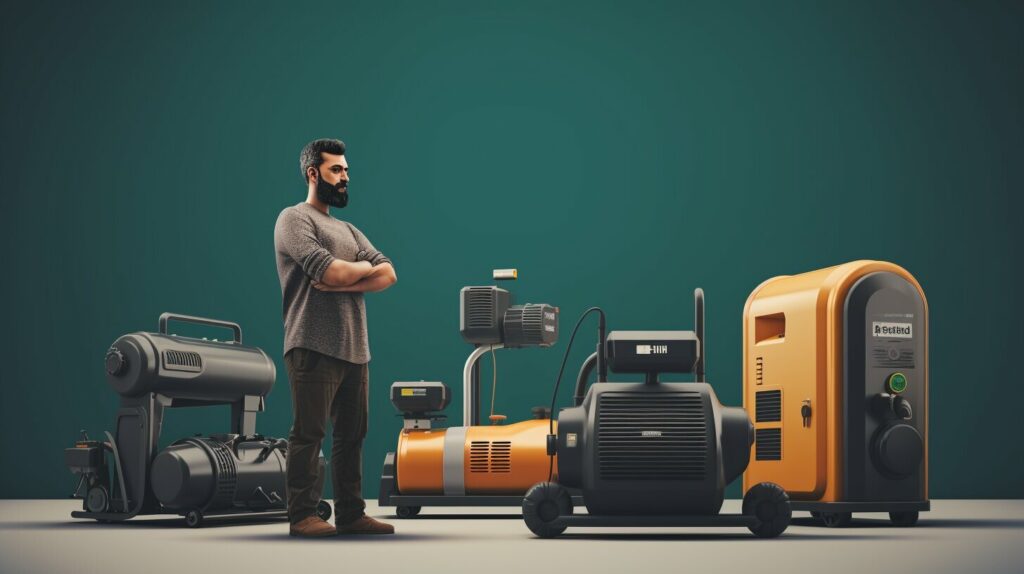
Evaluating Power Sources and Noise Level
When choosing an air compressor, it’s essential to consider the power source and noise level. The power source can affect the compressor’s portability, cost, and performance, while the noise level can impact the environment and the user’s comfort.
Power Sources for Air Compressors
Air compressors can be powered by either electricity or gas. Electric air compressors are suitable for indoor and smaller applications but may require a power outlet. On the other hand, gas-powered air compressors are more powerful and suitable for outdoor use but may produce exhaust fumes and require regular maintenance.
When selecting a power source, consider the availability of power outlets, the nature of the use, and the long-term cost-effectiveness.
Noise Level of Air Compressors
Air compressors can produce varying noise levels, which can be a major concern for some users. If you plan to use the compressor in a residential area or shared workspace, selecting a model with lower decibel ratings is crucial to minimize noise pollution.
Look for air compressors with noise ratings below 80 decibels, which is the average noise level of a busy street. Additionally, consider adding soundproofing materials to the compressor’s enclosure or investing in a professional-grade muffler.
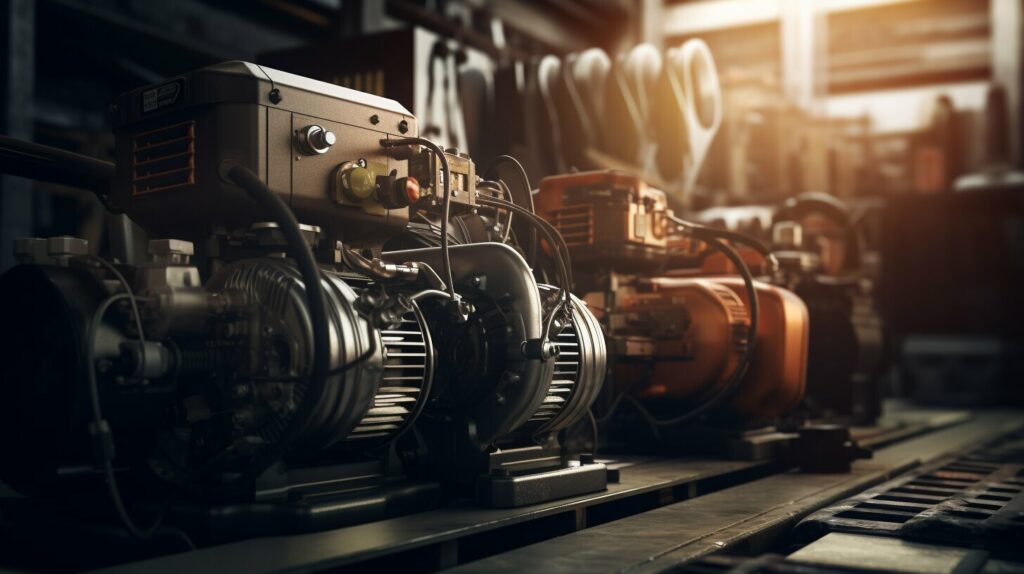
When comparing different air compressors, remember the power source and noise level to narrow down your options and identify the best fit for your needs.
Considering Portability and Space Constraints
If you have limited space or need to move your air compressor around frequently, portability and space-saving features are crucial considerations. Portable air compressors allow you to take your device with you to your job site or to different locations. They are typically smaller, making them an ideal choice for those with limited storage space.
When shopping for a portable air compressor, consider the weight and size of the unit. Look for models with sturdy handles and wheels to make transportation easier. Some models have a built-in storage compartment for accessories like hoses or regulators.
If you have limited space in your garage or workshop, look for air compressors with a small footprint. These compressors are designed to fit into tight spaces and can be mounted on walls or placed on shelves.
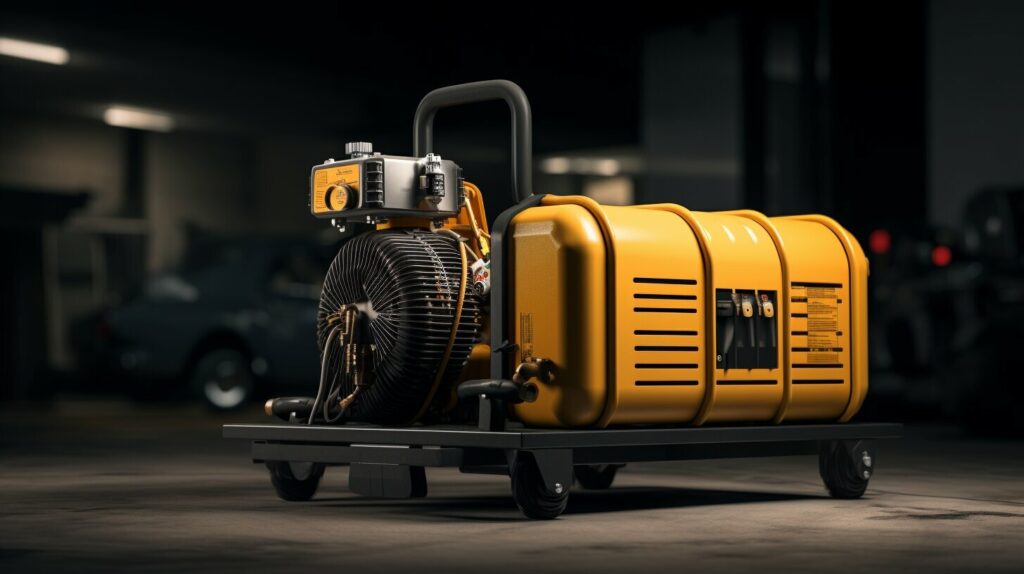
Portable air compressors are equipped with smaller tanks, which means they have less air storage capacity. However, they are suitable for powering smaller tools like nail guns, paint sprayers, and airbrushes.
Exploring Industrial Air Compressors
Industrial settings require heavy-duty air compressors that can withstand extreme conditions and perform consistently. These air compressors are designed to meet the high demands of industrial applications, such as manufacturing plants, automotive workshops, and construction sites.
| Features | Benefits |
|---|---|
| Powerful motors and high CFM ratings | It can withstand heavy usage, extreme temperatures, and harsh environments. |
| Durable construction and components | Can withstand heavy usage, extreme temperatures, and harsh environments. |
| Larger tank capacity | It can store more compressed air, reducing the need for frequent refills. |
When choosing an industrial air compressor, consider the specific requirements of your application. Determine the necessary CFM, horsepower, and tank size based on the tools and equipment you will be using. It’s also important to consider the power source available, as industrial air compressors often require 3-phase electricity.
Top-rated industrial air compressors include the Quincy QT-54, Atlas Copco GX11FF, and Ingersoll Rand 2475N7.5. These models offer high CFM ratings, durable construction, and reliable performance.
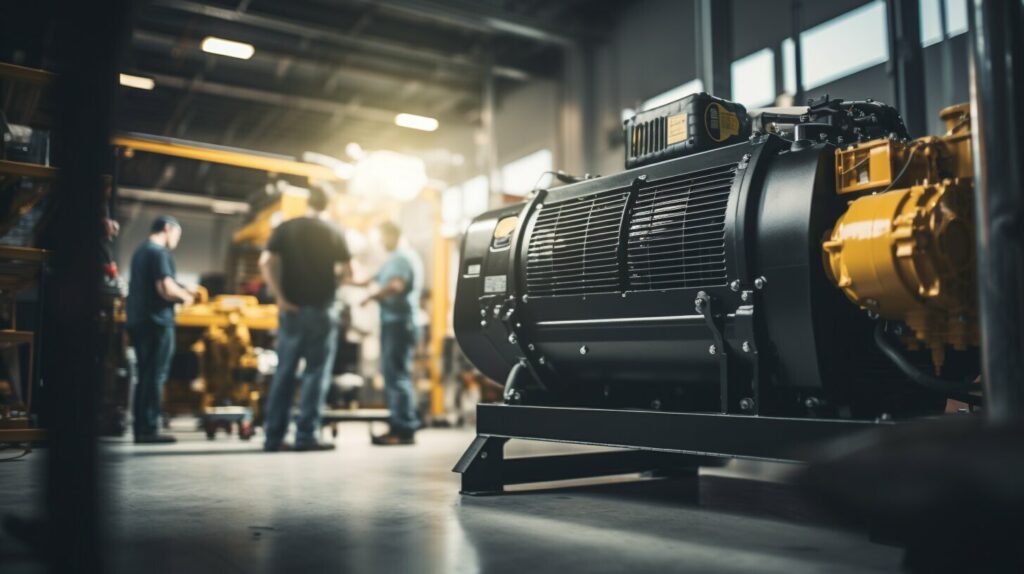
Investing in a quality industrial air compressor can increase productivity and efficiency in your workplace. Choose a model that meets your specific needs and can withstand your application’s demands.
Figuring Out the Right Air Compressor Accessories
When selecting an air compressor, it’s important to consider the accessories that will enhance its performance and versatility. Here are some essential accessories to keep in mind:
| Accessory | Description |
|---|---|
| Air hoses: | These connect the air compressor to the tool or application. Choose the right length and diameter to avoid pressure drops. |
| Fittings: | These enable the connection between the hose and the tool, ensuring an airtight seal. |
| Regulators: | These control the air pressure output and are useful for applications that require precision. |
| Filters: | These remove moisture, oil, and other impurities from the compressed air, improving tool performance and lifespan. |
Remember that not all air compressor accessories are compatible with all models, so check the specifications before purchasing. Additionally, investing in high-quality accessories can save you money in the long run by reducing maintenance costs and preventing damage to tools.
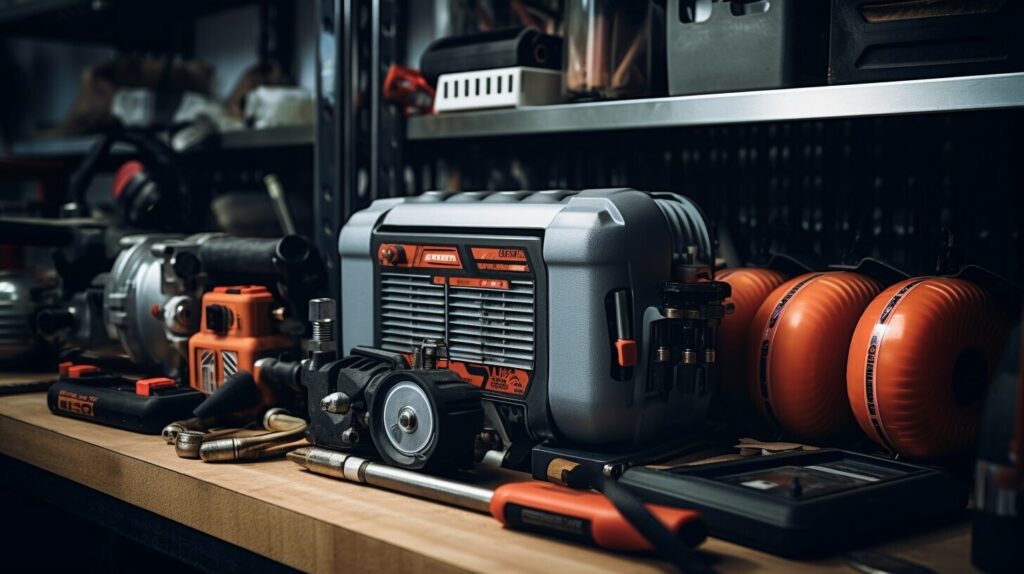
Comparing Prices and Cost-Effectiveness
Once you have determined your air compressor requirements, it’s time to consider the cost. While opting for the cheapest model available is tempting, remember that a subpar air compressor may cost you more in the long run due to poor performance and frequent repairs.
On the other hand, the most expensive air compressor may not always be the best fit for your needs. It’s essential to find a balance between budget and quality.
When comparing prices, consider the features and benefits of each air compressor. Look for models that offer the most value for your money, such as those with a warranty, energy-efficient motors, and low noise levels. Remember to factor in the long-term cost-effectiveness, including maintenance and repair costs.
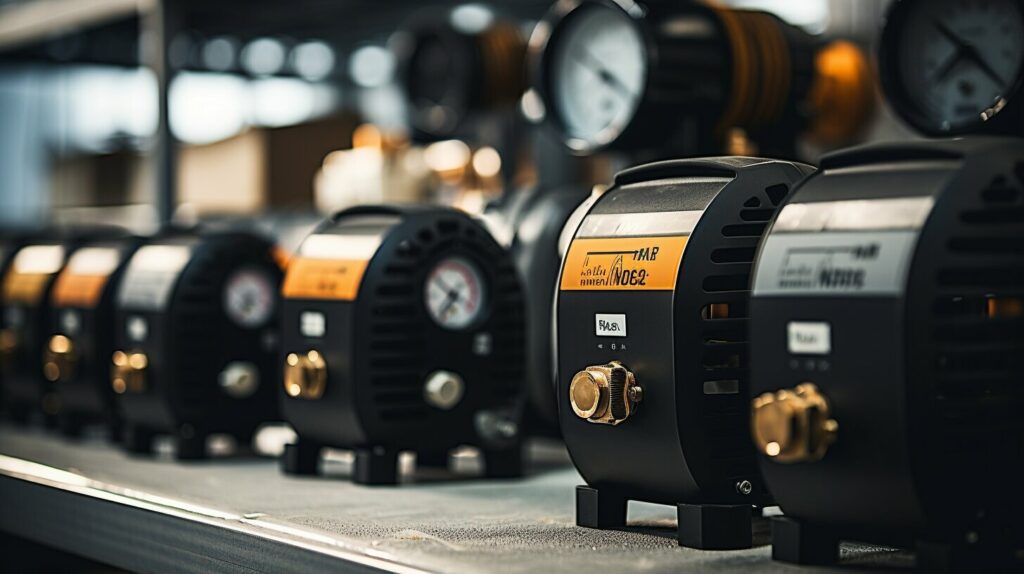
Top-Rated Air Compressors – Reviews and Recommendations
Now that you understand what to look for when choosing an air compressor let’s look at some of the top-rated models available in the market.
1. California Air Tools 8010 Ultra Quiet Air Compressor
| Features | Specifications |
|---|---|
|
|
This air compressor is ideal for DIYers and hobbyists who need a compact and quiet model for their projects. Its 8-gallon tank provides sufficient capacity for most applications, and the oil-free pump ensures minimum maintenance. With a noise level of only 60 decibels, this air compressor is one of the quietest on the market, making it perfect for indoor use.
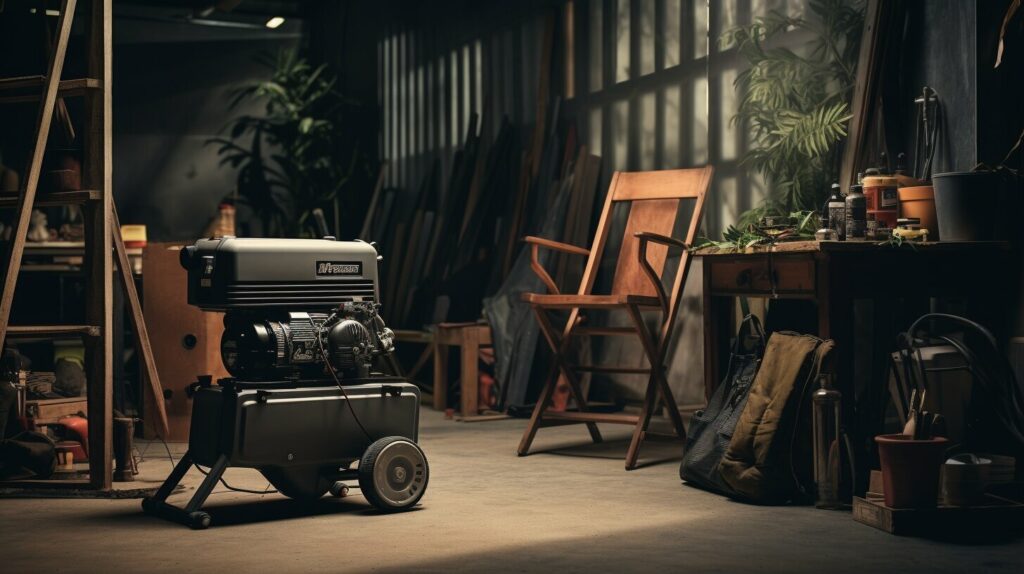
2. DEWALT D55168
| Features | Specifications |
|---|---|
|
|
The DEWALT D55168 air compressor is a great option for those with moderate to heavy-duty usage needs. Its 15-gallon tank provides ample air capacity, and the vertical design makes it easy to store in small workshops. The high-flow regulator and couplers ensure maximum performance, and the overload protection guarantees long-lasting durability.
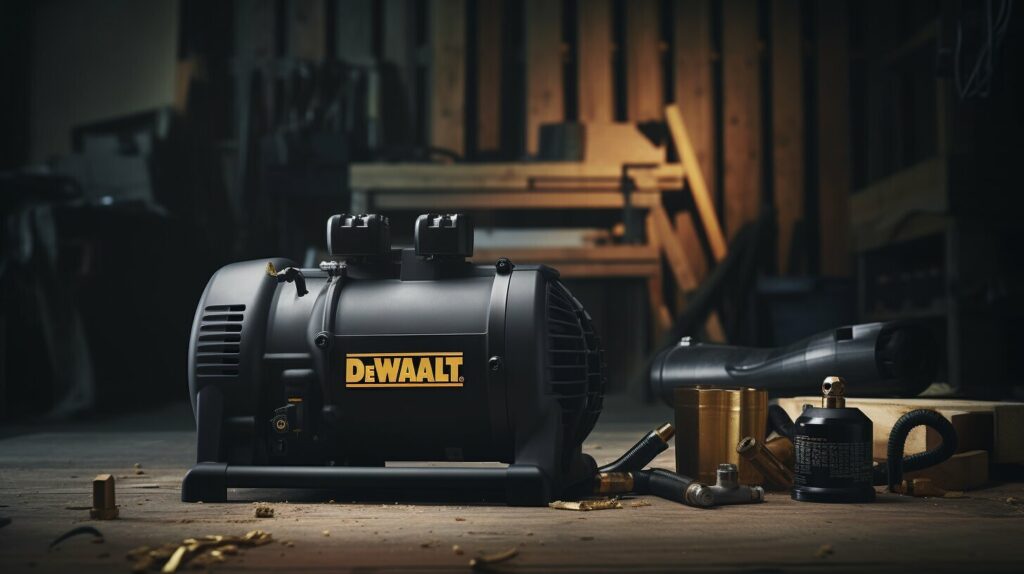
Conclusion
These are just two of the many top-rated air compressors available in the market, and choosing the right one ultimately depends on your specific needs and requirements. It’s important to consider factors like portability, power sources, noise level, and each model’s overall cost-effectiveness and maintenance requirements. By doing your research and making an informed decision, you can be sure to find an air compressor that suits your needs and helps you accomplish your projects with ease.
Best Practices for Air Compressor Maintenance
Proper maintenance is crucial for maximizing the performance and lifespan of your air compressor. By following these best practices, you can ensure that your compressor continues to work efficiently and effectively for years.
Regular Inspection and Cleaning
Regular inspection and cleaning are among the most important aspects of air compressor maintenance. Check for any signs of wear and tear, including leaks, cracks, and loose fittings. Inspect the air filters and replace or clean them as needed. It’s also important to clean any dirt or debris that may have accumulated on the compressor’s exterior.
Oil Changes
Like any machinery with moving parts, your air compressor requires regular oil changes to keep it running smoothly. Check the manufacturer’s instructions for the recommended oil type and frequency of changes. Generally, oil should be changed every 500 hours of use or at least once a year.
Draining the Tank
Condensation can accumulate in the compressor’s tank over time, leading to rust and corrosion. To prevent this, it’s important to drain the tank regularly. Follow the manufacturer’s instructions for the specific procedure and frequency of tank draining.
Proper Storage
When your air compressor is not in use, it should be stored in a clean, dry, and well-ventilated area. This will help prevent rust, corrosion, and other damage. Turn off the power and release any pressure in the tank before storage.
Professional Maintenance and Repairs
If you’re uncomfortable performing maintenance or repairs on your air compressor, it’s best to leave it to a professional. Regular professional maintenance can help identify and address potential issues before they become larger problems.

By following these best practices, you can ensure that your air compressor remains in top working condition for years to come, minimizing downtime and maximizing efficiency.
Troubleshooting Common Air Compressor Issues
Despite regular maintenance and care, air compressors may experience common problems that can hinder their performance. Here are some troubleshooting tips to help you identify and resolve these issues.
Problem: Air Leaks
Air leaks are a common issue in air compressors that can cause a pressure drop and slow performance.
| Solution | Description |
|---|---|
| Check for Loose Connections | Make sure all hose connections, couplers, and fittings are tightly secured. |
| Replace Seals | Worn-out seals can cause leaks and need to be replaced. |
| Check Valves | Sometimes, air leaks can result from malfunctioning valves that need cleaning or replacement. |
If these solutions do not resolve the issue, seek professional assistance.
Problem: Inadequate Pressure
If your air compressor is not producing sufficient pressure, it may not be able to perform its designated tasks effectively.
| Solution | Description |
|---|---|
| Check the Air Filter | A clogged air filter can limit airflow and reduce pressure. Clean or replace the air filter regularly. |
| Verify the Regulator Settings | Check that the regulator is set at the desired pressure levels. Adjust as necessary. |
| Look for Air Leaks | Leaks can cause pressure loss. Check the system for leaks and fix them. |
Problem: Motor Malfunctions
Motor malfunctions can lead to an air compressor that cannot start or run efficiently.
| Solution | Description |
|---|---|
| Check the Power Supply | Ensure that the air compressor is connected to a reliable power supply. Check for blown fuses or tripped breakers. |
| Check the Capacitor | The capacitor is responsible for starting the motor. If it is malfunctioning, the motor may not start. Replace it if necessary. |
| Check the Belt | A loose or damaged belt can affect the motor’s performance. Tighten or replace the belt as necessary. |
Remember to follow safety guidelines when working with electricity and motor components.
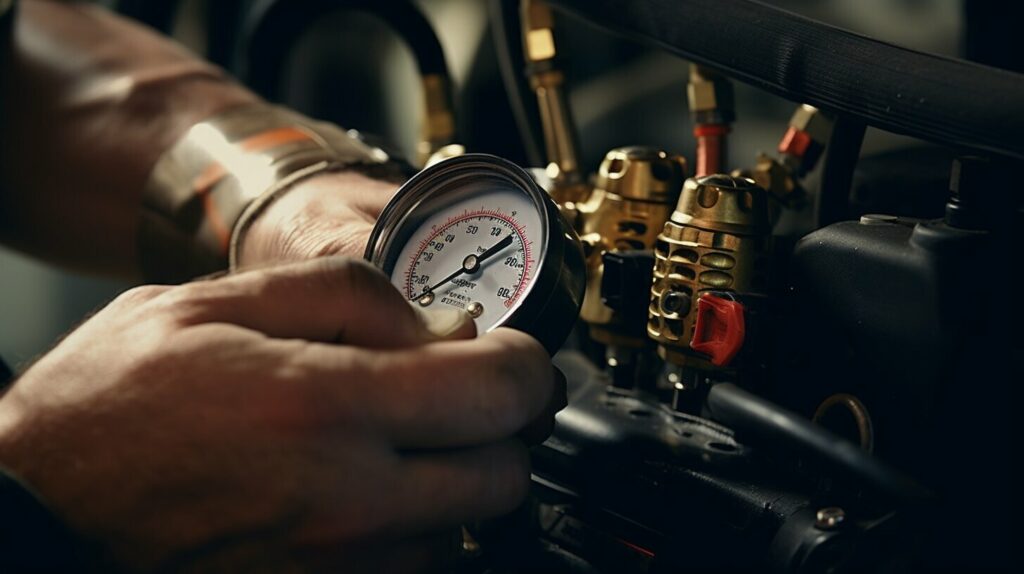
With these troubleshooting tips, you can identify and resolve common air compressor issues without professional assistance. However, if the problem persists or you are unsure about your ability to troubleshoot, seek professional help.
Frequently Asked Questions (FAQs) about Air Compressors
Here, we’ve compiled some of the most frequently asked questions about air compressors to provide quick and informative answers for our readers.
How often should I change the oil in my air compressor?
This would depend on your air compressor’s usage, but a general rule of thumb is to change the oil after the first 50 hours of use and then every 500 hours thereafter.
Can I use my air compressor for painting or staining projects?
Yes, but it would require an airbrush gun or spray gun attachment to achieve the desired finish. Ensure that the air compressor’s CFM and PSI are compatible with the gun you intend to use
How do I know what size air compressor I need?
Consider the tools you will be using with the air compressor, and their respective CFM and PSI requirements, and then select an air compressor with slightly higher CFM and PSI ratings than your tools. Additionally, consider the frequency and duration of use and choose the appropriate tank size and duty cycle.
What is a duty cycle, and why is it important?
A duty cycle is the percentage of time an air compressor can run within a given time frame. For example, an air compressor with a 50% duty cycle can run for half an hour and then rest for another half an hour before use. It’s important to consider the duty cycle when selecting an air compressor for prolonged or continuous use.
Can I use an extension cord with my air compressor?
Yes, but ensure that the extension cord is rated for the same amperage as your air compressor and is of sufficient length to avoid voltage drops. Additionally, ensure that the extension cord is grounded and in good condition.
Are there any safety precautions I should take when using my air compressor?
Always wear eye and ear protection when using your air compressor, and avoid wearing loose clothing or jewelry that can get caught in moving parts. Additionally, ensure that the air compressor is properly grounded and never exceed your tools’ or attachments’ recommended PSI ratings.
We hope that these answers to frequently asked questions about air compressors have helped guide you towards safer and more efficient use of your air compressor.
What is the best air compressor for my home garage?
The best air compressor for your home garage will depend on your specific needs. However, some popular choices among homeowners are the California Air Tools 8010 and the Twin Stack Air Compressor.
Are pancake air compressors portable?
Yes, pancake air compressors are portable. They are designed to be compact and easy to move around, making them a great option for DIYers and contractors on the go.
What are the advantages of using an air tool?
Air tools have several advantages over traditional power tools. They are generally lighter, more powerful, and have a longer lifespan. Additionally, they don’t require batteries or cords, making them more convenient.
Can I use an air compressor to inflate tires?
Yes, you can use an air compressor to inflate tires. It’s one of the most common uses for an air compressor. Just make sure to check the recommended tire pressure before inflating.
What are the benefits of a quiet air compressor?
A quiet air compressor is beneficial because it reduces noise pollution and allows for a more comfortable working environment. It’s especially useful when noise is a concern, such as in residential areas or indoor workshops.
How do I choose the best air compressor for my needs?
When choosing the best air compressor, consider the intended use, required air pressure, tank size, noise level, and portability. It’s also helpful to read reviews and compare different models to find the one that suits your needs.
What are the top picks for the best air compressors of 2023?
The top picks for the best air compressors of 2023 are the California Air Tools 8010, the Craftsman Air Compressor, and the Porter-Cable Pancake Air Compressor. These models are known for their performance, reliability, and user-friendly features.
Can I use an air compressor for a home garage?
Absolutely! An air compressor is a valuable tool for a home garage. It can power pneumatic tools, inflate tires, and assist with various DIY projects. Just make sure to choose a suitable compressor for your specific needs.
What are oil-free air compressors?
Oil-free air compressors do not require lubrication to operate. They are designed to be maintenance-free and eliminate the risk of oil contamination in sensitive applications. They are a popular choice for those who prefer hassle-free operation.
How much air do I need in an air tank?
The air you need in an air tank will depend on the tools or equipment you plan to use. Check the air requirements of the tools you will be using and choose a compressor with a tank capacity that can handle the demands.
Sources
Energy Analysis of Precooling Air Compressor System: This study by Hu Y, Xu W, Jia G, Li G, Cai M, published in Entropy (Basel) in 2022, discusses the energy-saving techniques for air compressor systems in the industrial field.
Energy Saving Benefit Analysis of the Compressor Short-Stop Adjustment Method Based on TGNET: This study by Fulin K, Yuxin L, Tong L, Wang L, Yinan Q, published in ACS Omega in 2021, discusses the energy-saving benefits of compressor short-stop adjustment.
Exergetic Analysis of a Cryogenic Air Separation Unit: This study by Bucsa S, Serban A, Balan MC, Ionita C, Nastase G, Dobre C, Dobrovicescu A, published in Entropy (Basel) in 2022, presents an exergetic analysis of the compression area of an Air Separation Unit (ASU).

